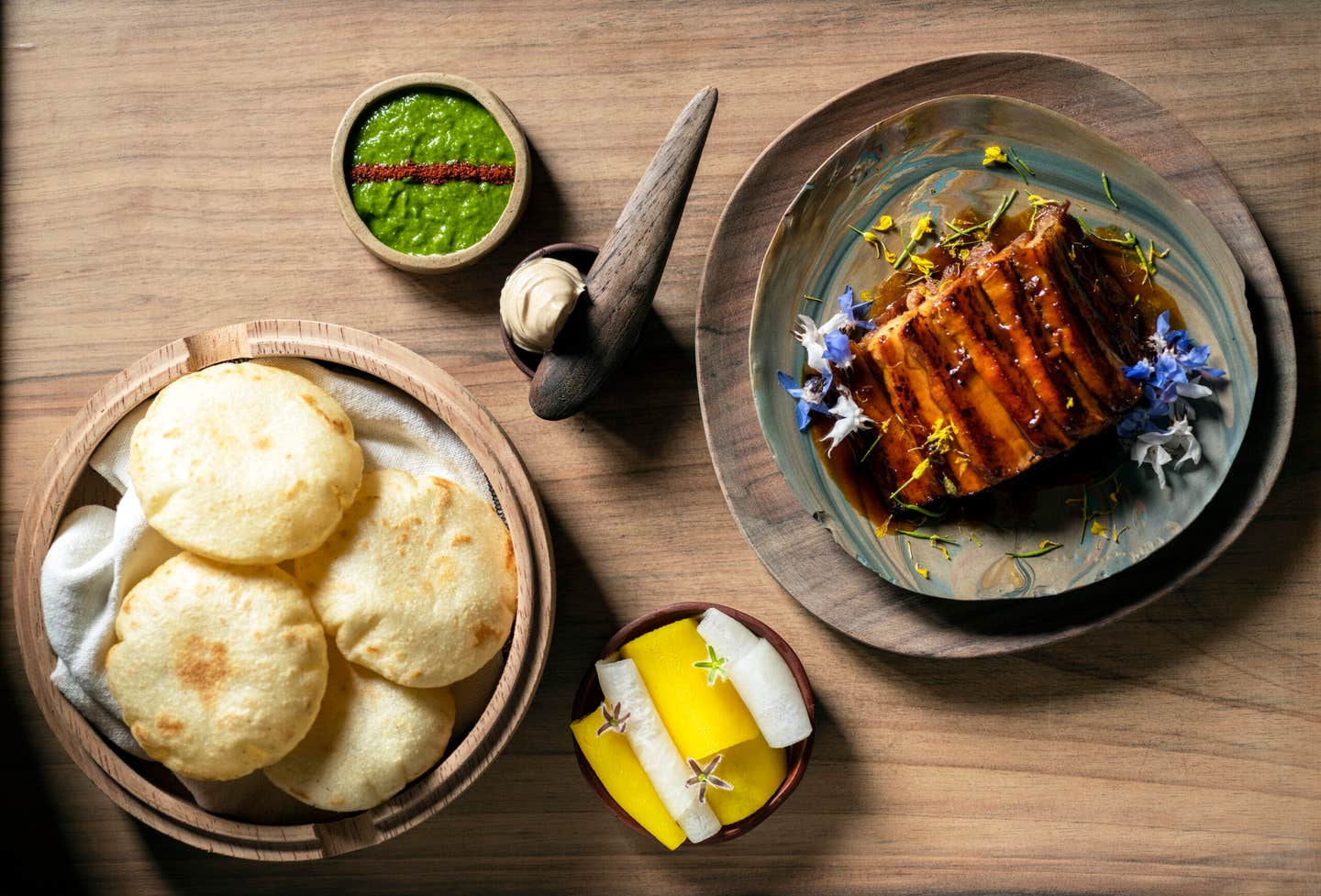
A New Cuisine Is Born in Peru
Venezuelan-Peruvian food is all the rage in Lima, but fusion often comes at a cost.
Peru is on top of the culinary world. Lima had more restaurants on this year’s World’s 50 Best list than any other city, and media everywhere extol its “fusion” cuisine—influenced by Indigenous traditions, Spanish colonists, and Japanese and Chinese immigrants. But there’s a recent trend in Peru that’s mostly been left out of the story, and it appears to be here to stay: Venezuelan-Peruvian cuisine.
The new hybrid seems to fit neatly into the classic “fusion” narrative: Immigrants blend elements of their favorite dishes from back home with those of their adopted country, and everyone comes together—literally and figuratively—to eat. Take Peru’s national dish, ceviche. It originated with Indigenous Peruvians who for centuries preserved fish with juice from the tumbo (a relative of the passion fruit), before European traders introduced limes. More recently, Japanese immigrants brought their sashimi expertise, cutting the fish more finely and marinating it just seconds before serving to create the fresh ceviche Peruvians know today—on its face, a happy multicultural success story. But as I learned talking to Venezuelan restaurant owners and patrons in Lima, the reality of Peruvian fusion is more complicated.
We diners are prone to forget that fusion isn’t just food—the orange chicken or nachos or bánh mì. It’s also the process that created it, often one of inspiration and desperation, resourcefulness and resilience.
Peru and Venezuela, being in the same part of the world and sharing a similar colonial history, have long enjoyed some level of culinary cross-pollination. But owing in large part to the disastrous policies of president Nicolás Maduro, that relationship has intensified because of immigration. In the last decade, the Venezuelan bolívar lost over 99% of its value against the U.S. dollar, rendering people’s cash savings worthless, while the minimum wage dropped below $1 per month. There were food shortages, desperation, and rising crime. One-fifth of the Venezuelan population saw no choice but to leave, and since 2016, about 1.5 million have fled to Peru. Those immigrants, despite their hardship, are now creating new dishes that bridge the culinary divide.
One such recipe is the ají de gallina tequeño. For the uninitiated, a Venezuelan tequeño is a crispy, dunkable cheese stick wrapped in a slightly sweet yeasted dough. Ají de gallina, on the other hand, is a creamy Peruvian stew with shredded chicken and the country’s famous yellow-orange chili pepper, the ají amarillo. Until recently, combining the two might have seemed unthinkable—but not to Oscar Vento, who fled the crisis himself and has one parent from Venezuela and another from Peru. Vento is the 29-year-old owner of Tequeño Lab, a casual restaurant in Lima’s artsy Barranco district that serves finger food in baskets in a vibrant dining room covered in handwritten notes from customers and images of the place's animated tequeño mascot. His signature tequeños are a family affair: His mother, Lorena, makes the ají de gallina, and he stuffs it into the cheesy dough stick. Imagine an old-school casserole wrapped in something you’d get from Sonic. In classic Venezuelan fashion, it all comes with an array of sauces for dunking—creamy garlic, sweet corn, guacamole.
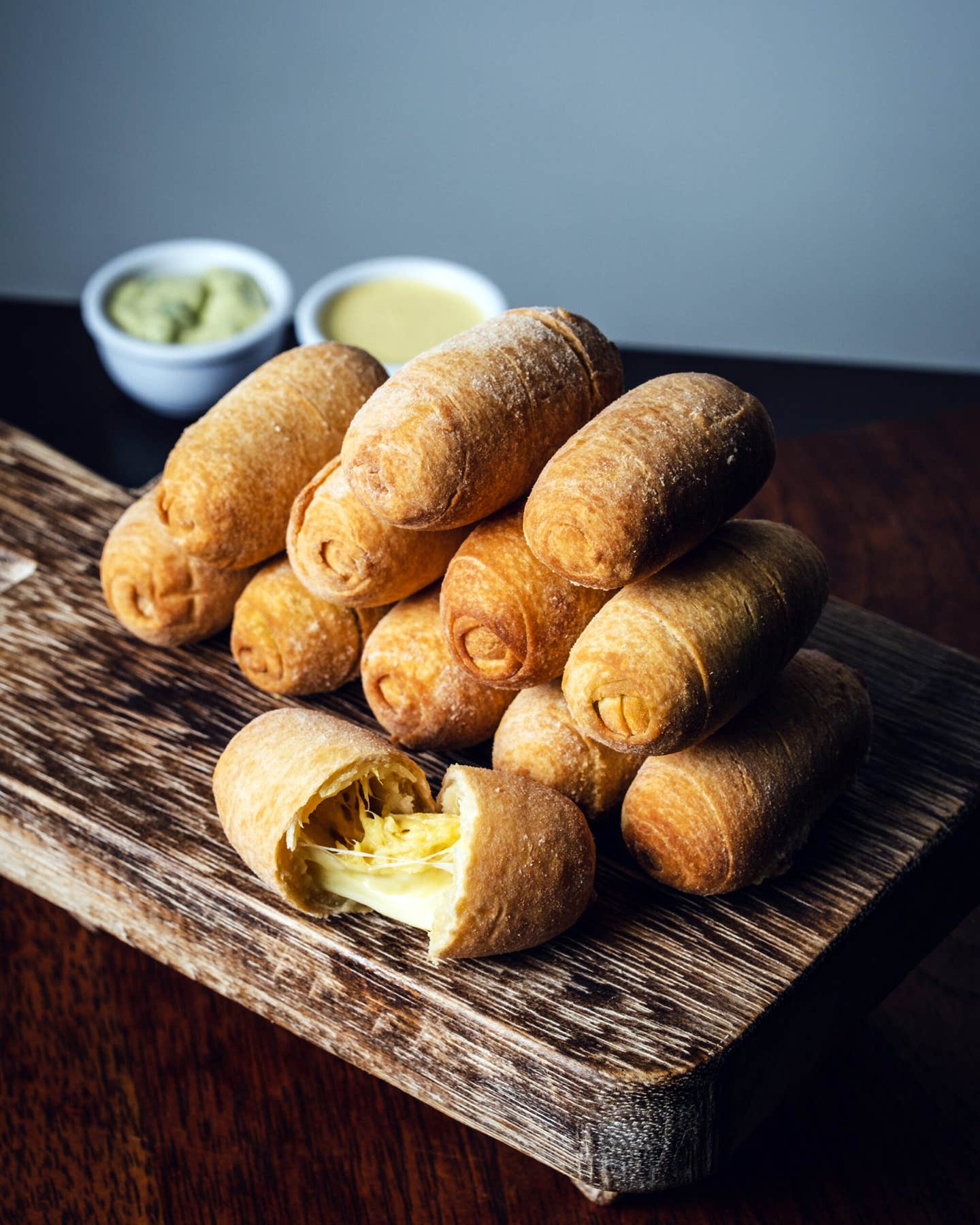
Despite initially getting some flak from a few purist locals, business is good, he says. Everybody, Venezuelans and Peruvians alike, love “seeing themselves represented in something,” Vento said. “This is the place to feel like both are fine.”
That’s an important message. In Peru, and across Latin America, xenophobia toward Venezuelans is an increasingly serious problem. Many politicians and media organizations in Peru have scapegoated the migrants, blaming them for everything from crime to prostitution to unemployment. A recent survey of Peruvians found that 80% are opposed to more Venezuelans moving into their district and nearly a quarter have no sympathy for their plight whatsoever. One in four Venezuelan children in Peru’s most populous districts is not in school (often because discriminatory school administrators refuse to enroll them). Vento has no illusions about Venezuelan food single-handedly righting these deep-seated wrongs, but does believe it can be a force for good. “Injecting my food from my home country in this project is emotional,” he said, his own small way to “heal this conflict in this place.”
Projects like his have popped up all over Lima. Joselín Guzmán, a 23-year-old Venezuelan immigrant, started a soup stand with fewer frills than Tequeño Lab—but all of the soulful fusion. Each Sunday they set up plastic chairs and tables on a wide, dusty road median in San Juan de Lurigancho, a lower-income district further inland from Barranco that’s come to be called “Little Venezuela.” There’s only one item on the menu: Venezuelan sancocho soup. The broth tastes bright with cilantro and brims with potato, yucca, and fatty hunks of beef rib meat.
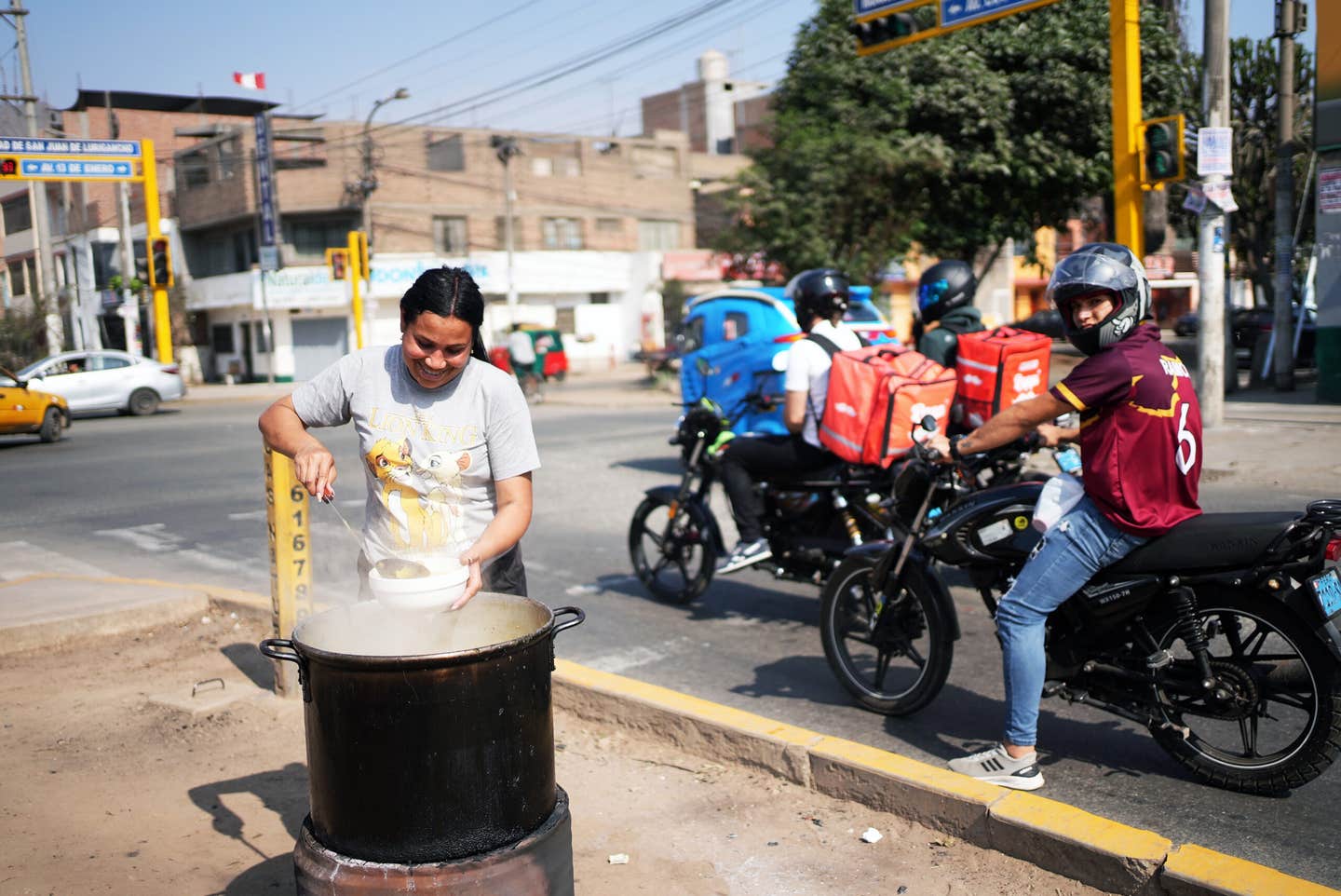
I met one customer who drives over 30 minutes every week to get a bowl that reminds him of home. In Venezuela, he was an accountant and economist. In Peru, he operates construction vehicles, unable to transfer his qualifications. He seeks out the soup, he said, “to rescue something lost—our customs, our way of working, our way of being.”
Guzmán tries to make the soup like she did at home, but here there’s a big difference: Peruvian choclo corn, nutty and with extra-large kernels. The variation is new to customers both Venezuelan and Peruvian.
But in Lima, Venezuelan-Peruvian fusion—and choclo specifically—isn’t all family-style street food. Down the road from Tequeño Lab, there’s another Venezuelan chef, Juan Luis Martínez, who’s generating buzz for unexpectedly refined dishes—and earning international recognition for them.
Meet Mérito, a restaurant where international tourists and upper-crust local foodies delight in dishes like choclo a la brasa, a barbecued ear of large-kerneled Peruvian choclo corn served in its steaming husk with a dipping sauce made of Venezuelan cheeses (creamy natilla and salty queso llanero). “I always wanted to create something different, something new,” Martínez said. “But I felt my roots had to be there.”
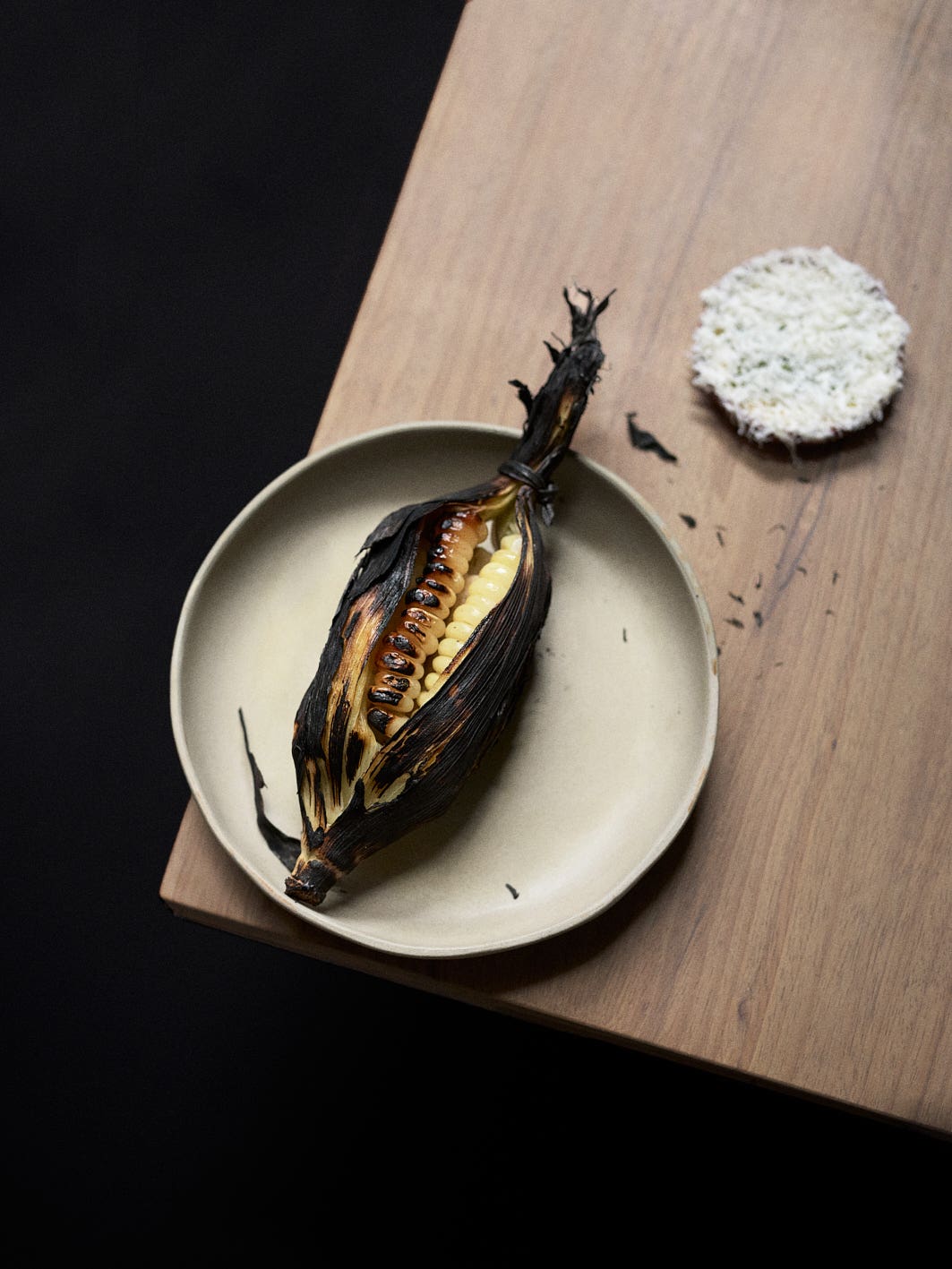
Martínez, who grew up and went to culinary school in Venezuela, moved to Lima to cook with Virgilio Martínez at Central—the best restaurant on Earth, according to some critics. In 2018, he ventured out on his own and opened Mérito, where he combined that newfound knowledge with his oldest memories of food back home. That lifetime of culinary discovery is on display in Mérito’s version of Venezuela's most famous national dish, the arepa. It features pork belly glazed with Andean tamarillo and butter infused with chicha de jora—an ancient Peruvian fermented corn drink known as “the nectar of the Incas.” It’s an old favorite revamped with the intriguing and distinctive flavors of Peru’s biodiverse coasts, mountains, and jungle.
Using the country’s expansive ingredient pantry in new ways, Martínez is pushing Peruvian cuisine forward. But something important is missing from that story.
“Cultural encounters are full of friction and tension,” said Raúl Matta, a Peruvian food studies researcher with the Institut de Recherche pour le Développement. Matta’s one of a number of scholars wary of mainstream, romanticized views of Peruvian fusion—one that can gloss over the uglier parts of its history. Take Chifa (Chinese-Peruvian) cuisine, for instance, which Matta finds as a relevant comparison to Venezuelan-Peruvian fusion.
When over 80,000 Chinese immigrant laborers poured into Peru in the mid-1800s, they were considered a threat to public health—“lazy and not very hygienic,” according to Matta. Over generations, despite such adversity, they became integrated into Peruvian society by learning Spanish, starting businesses, and—importantly—sharing their food. Today, Chifa restaurants are seemingly everywhere in Lima, and you can’t imagine the city without dishes like arroz chaufa, Peruvian-Chinese fried rice.
Whether the same story plays out with the new Venezuelan diaspora in Peru remains to be seen. “Venezuelan migration will put to the test this idea of fusion,” Matta said. But there is reason for optimism: studies show that people who share food (or even just eat similarly to each other) tend to cooperate better, and when they experience other cultures, they show less prejudice.
For Martínez’s part, he’s confident that when “passionate people make passionate food, that can only translate into good energy going back to everyone who eats it.” He added that any cook who pours their creativity into a new dish, like a “new arepa—that has to make an impact.” Already in the Venezuelan restaurant Canaima Restobar, in San Juan de Lurigancho, there is a lomo saltado arepa. One of Peru’s most beloved chifa dishes—stir fried beef, onions, ají amarillo, and tomatoes with soy sauce—stuffed into a Venezuelan arepa with a creamy cilantro dipping sauce. It’s fusion inside fusion.
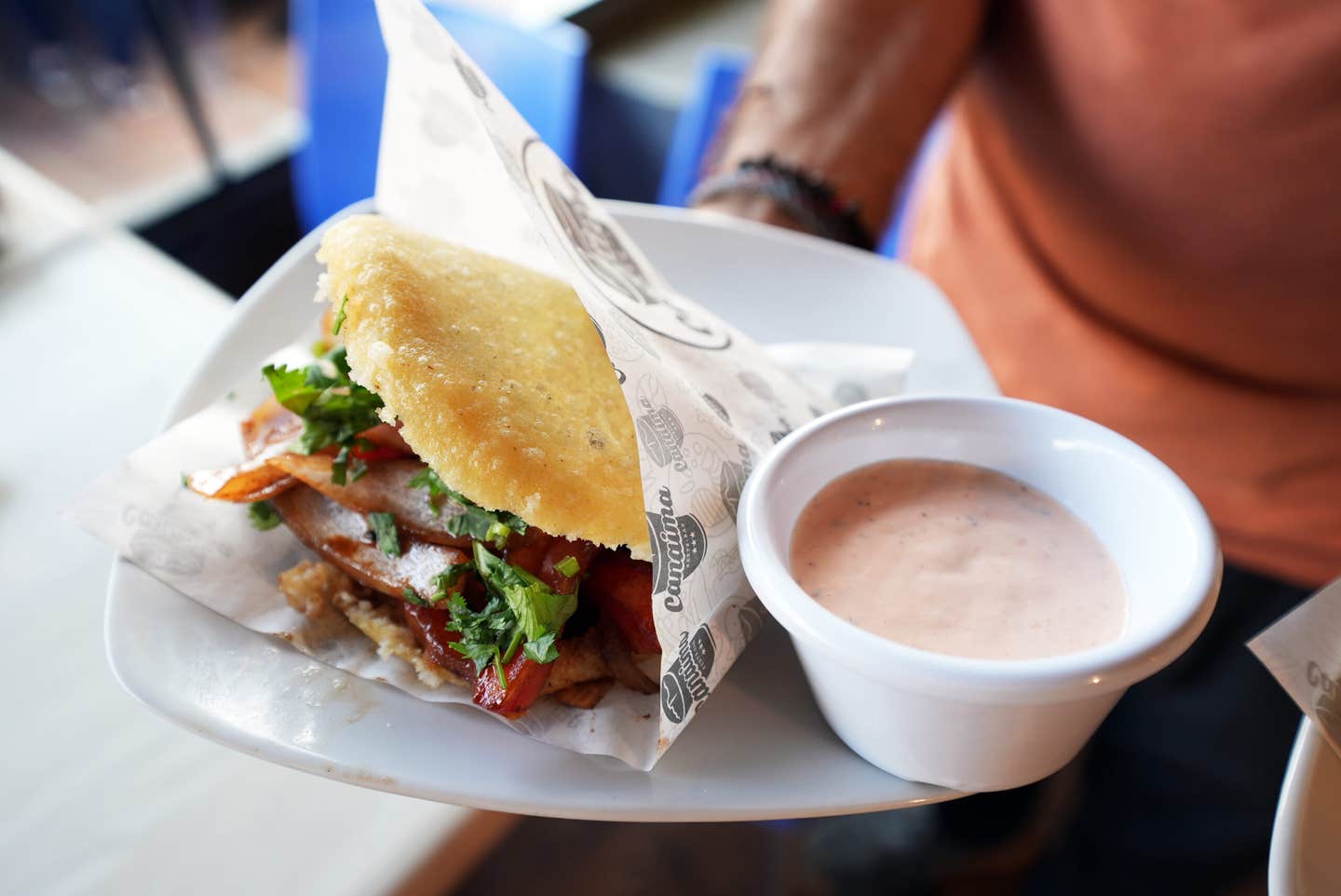
These new arepas, soups, and tequeños are delicious silver linings. They are a testament to a creative group of migrants making the best out of a bad situation. Juan Luis Martínez wonders whether any of these novel dishes will seem like fusion at all decades from now: In time, they may become as ubiquitous as crab rangoons or pepperoni pizza. Fusion, after all, is just an idea. “There’s one source and everything after that is fusion,” Martínez said. But if we can remember a bit of the ingenuity and perseverance behind these dishes, it could help us prevent past mistakes—which can only make them taste that much better.
Keep Reading
Continue to Next Story










